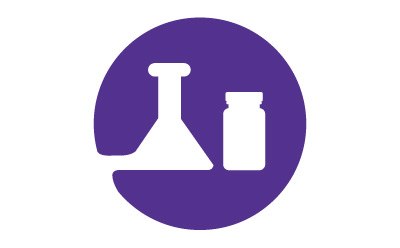Workflow for Cannabinoids Analysis in Hemp and Hemp-Infused Products
Sunil Badal, Senior Scientist1, Uma Sreenivasan, Head of Reference Materials R&D1
1-Round Rock, USA
Section Overview
- Introduction: HPLC Analysis of Cannabinoids in Cannabis and Hemp Products
- Chemical Structure of 17 Cannabinoids
- HPLC Mobile Phase Preparation
- Preparation of Peak Identification and Calibration Solution
- HPLC Method Development Parameters
- Sample Preparation for Hemp Bud
- Sample Preparation for Hemp Oil
- Sample Preparation for Chocolate
- Sample Preparation for Gummy
- Sample Preparation for Candy
- Sample Preparation for Cream
- Results and Discussion
- Cannabinoid Potency in Hemp Bud
- Cannabinoid Potency in Hemp Oil
- Cannabinoid Potency in Gummy Sample
- Cannabinoid Potency in Chocolate
- Cannabinoid Potency in Candy
- UV Spectra Analysis
- Conclusion
- Related Materials
Sample Preparation

Standardization & Calibration

Chromatography

Measurement & Analysis

Introduction: HPLC Analysis of Cannabinoids in Cannabis and Hemp Products
Legalization and use of hemp, recreational and medical cannabis is expanding globally. Cannabidiol (CBD) and tetrahydrocannabinol (THC) containing cannabis products are consumed in various forms such as flowers, vape pens, edibles, concentrates, tinctures, beverages, topicals, capsules, etc. These hemp, CBD, and cannabis products need to be tested to ensure accurate labeling of contents and consumer safety. A research study found that only 17% of edible products were accurately labeled when 75 different cannabis-infused edible products were tested.1 Due to the complexity of cannabis product matrices, sample preparation for cannabinoid testing is very challenging. Accurate extraction and analysis procedures are required to ensure proper regulation of these products. In this study, we explored simple and accurate sample preparation methods for the analysis of cannabinoids from several matrices.
This work provides a complete HPLC-PDA (high-performance liquid chromatography - photodiode array) workflow for cannabinoids analysis using:
- Detailed sample preparation of hemp bud, hemp oil, chocolate, gummy, candy and cream.
- Demonstration of two HPLC methods to separate seventeen cannabinoids; one based on acetonitrile as an organic modifier and Ascentis® Express C18 column; another based on methanol as an organic modifier and Ascentis® Express C8 column.
- Calibration curve preparation using certified reference materials (CRMs).
- Cannabinoid potency testing in various matrices.
Chemical Structure of 17 cannabinoids
Cannabinoids are compounds found in the cannabis plant or synthetic compounds that can interact with the endocannabinoid system. There are more than 100 distinct cannabinoids that have been isolated from cannabis. Many of these cannabinoids are isomers or very similar in structures. Delta9-Tetrahydrocannabinol (∆9-THC) is the most notable primary psychoactive compound and cannabidiol (CBD) is another major non-psychoactive constituent in cannabis. Structures of ∆9-THC, CBD, and some other cannabinoids analyzed by the method described here are shown in Figure 1.

Figure 1.Chemical structures of seventeen cannabinoids analyzed in this study.
HPLC Method Development Parameters
Two separate HPLC-PDA methods were tested for the separation of 17 cannabinoids. The Rapid Gradient Acetonitrile Method is based on Ascentis® Express C18 column with acetonitrile as an organic modifier, whereas the Low-Cost Methanol Method is based on Ascentis® Express C8 column with methanol as an organic modifier. Details of all HPLC parameters are summarized in Table 3 and Table 4 below.
Sample Preparation for Hemp Bud
The hemp bud sample needs to be ground into small particles to ensure the maximum number of cannabinoids can be extracted. This homogenization step is probably the biggest challenge if proper equipment for homogenization is not available. Low-temperature homogenization such as frozen ball-milling is the preferred method of homogenization without sample degradation. However, a cryo-cup grinder as suggested in this article can be used as an alternative for small-scale experiments. Step-by-step instructions for hemp bud sample preparation are described below:
- Homogenize the hemp bud sample using a cryocup grinder or other suitable frozen ball milling process.
- Accurately weigh 0.5±0.01 g homogenized sample and transfer it into a 50 mL polypropylene centrifuge tube.
- Dispense 20 mL ethanol into a tube and vortex for 1 min and then incubate on a horizontal shaker for 30 min.
- Centrifuge sample at 4000 rpm for 5 min to pellet plant material.
- Pour supernatant into a 50 mL amber volumetric flask and set aside for the second extraction.
- Perform a second extraction of material with 20 mL ethanol and extract to the 50 mL amber volumetric flask containing the contents of the first extraction.
- Fill the flask with ethanol up to the mark and mix well.
- Filter sample directly into HPLC vial with 0.2 µm PTFE membrane for analysis.
- Perform 1:10 and 1:100 dilution of the sample with methanol (Note that dilution level might be adjusted to fall within the calibration curve. Different dilution levels might need to be used to quantitate different cannabinoids. Run a screening analysis with 1:10, 1:100, and 1:1000 dilution if needed.)

Figure 2.Sample preparation workflow for hemp bud.
Sample Preparation for Hemp Oil
Since hemp oil can readily dissolve in appropriate solvents, hemp oil sample preparation is relatively simple. The hemp oil sample is first agitated in an appropriate volume of isopropanol and then diluted in methanol. Step-by-step instructions are given below:
- Weigh a 10 µL hemp oil sample in an autosampler vial. Record the mass. (If accurate weighing of 10 µL is not possible, follow the alternative method described below in the note)
- Add 495 µL isopropanol (IPA) and mix it well by vortex for 1 minute.
- Add 495 µL methanol and mix it well by vortex for 1 minute (final dilution 100X).
- Use this solution for analysis of all minor cannabinoids except for CBD.
- Perform 1:10 dilution with methanol for CBD quantitation.
Note: Different dilution levels might need to be used to quantitate different cannabinoids. If accurate weighing is not possible for a 10 µL hemp oil sample, a larger amount of sample can be used for the analysis, and volumes of solvents need to be increased accordingly. For example, 50 µL of hemp oil can be agitated in 5 mL isopropanol in a 10 mL volumetric flask and then fill up to the mark with methanol followed by appropriate dilution.
Sample Preparation for Chocolate
Chocolate samples do not dissolve in methanol or acetonitrile (ACN) solvents easily. The sample needs to be dissolved in water to bring it to a solution and then extracted to the organic phase using the extraction step of the QuEChERS technique.2 The salts in the QuEChERS extraction process effectively force the separation of ACN from the aqueous layer. Sugars remain dissolved in the aqueous phase, while some lipids still get retained in the organic phase. If the extract with lipids is injected without further treatment, it will significantly decrease column life. Hence, techniques like winterization needs to be performed to prepare the final extract. Step-by-step instructions to prepare chocolate samples for cannabinoid potency testing are provided below:
- Dissolve 1 g chocolate sample in 15 mL warm water (~75 °C) in a 50 mL centrifuge tube.
- Add 15 mL ACN and shake manually for 10 s.
- Add unbuffered QuEChERS salt mix (4g MgSO4 and 1 g NaCl) and shake in an automated shaker for 5 minutes.
- Centrifuge at 4300 RPM for 5 min.
- Draw off the top layer (15 mL) for HPLC/UV analysis.
- Keep extract at -20 °C for 30 minutes for winterization and centrifuge at 4000 RPM for 2 min. Alternatively, refrigerate the extract for ~3 hr for winterization in case the -20 °C freezer is not available and centrifuge.
- Centrifuge for 2 min and draw the top layer.
- Filter sample directly into HPLC vial with 0.2 µm PTFE membrane for analysis.
- Perform 1:10, 1:100, and 1:1000 dilutions of sample with methanol. (Note that the dilution level might be adjusted to fall within the calibration curve. Different dilution levels might need to be used to quantitate different cannabinoids. Run a screening analysis with 1:10, 1:100 and 1:1000 dilution if needed.)

Figure 3.Sample preparation workflow for a chocolate sample.
Sample Preparation for Gummy
Sample preparation for gummy is similar to chocolate but it does not necessarily require a winterization step as gummy samples do not generally contain lipids. Just like chocolate, gummy samples also do not dissolve in methanol and need to be dissolved in water first, followed by the QuEChERS extraction process. Step-by-step instructions for gummy sample preparation are provided below.

Figure 4.Sample preparation workflow for a gummy sample.
- Record the weight of one gummy. Dissolve one gummy in 25 mL warm water in a 50 mL centrifuge tube. (Note: Since one gummy is usually ~5-6 g, it needs more water to dissolve. Gummy sample can be cut into pieces to accelerate dissolution.)
- Add 15 mL ACN and shake manually for 10 seconds.
- Add unbuffered QuEChERS salt (4g MgSO4 and 1 g NaCl) and shake in an automated shaker for 5 minutes.
- Centrifuge at 4300 RPM for 5 min.
- Draw off the top layer (15 mL) for HPLC/UV analysis.
- Filter sample directly into HPLC vial with 0.2 µm PTFE membrane for analysis.
- Perform 1:10, and 1:100 dilutions of the sample with methanol. (Note that the dilution level might be adjusted to fall within the calibration curve. Different dilution levels might need to be used to quantitate different cannabinoids. Run a screening analysis with 1:10, 1:100, and 1:1000 dilution if needed.)
Sample Preparation for Candy
Sample preparation for hard candy is similar to gummy and it also does not require winterization. Candy can be broken into small pieces to accelerate dissolution in water. In addition, a smaller sample size (1-2 g) can be used with dissolution in 15 mL water or whole candy (4-6 g) can be dissolved in 25 mL water for the first step. The remaining steps are the same as gummy sample preparation.
Sample Preparation for Cream
Cannabinoids from a cream sample can be extracted to solvent by vortex and sonication of melted sample dipped in the extraction solvent. Following are the step-by-step instructions for cream sample preparation:
- Weigh 1 g of cream in a 20 mL glass vial and record the exact weight.
- Warm it in a water bath to make it liquid-like.
- Add 10 mL methanol and vortex for 1 minute.
- Sonicate for 5 minutes. After this, all cannabinoids should be extracted into methanol.
- Filter some with a 0.2 µm PTFE filter.
- Dilute 1:10 and 1:100 with methanol for analysis.
Results and Discussion
System Suitability: Peak Identification Solutions
Two separate HPLC-PDA methods are developed for the separation of 17 cannabinoid mixtures. Chromatograms showing the separation of 17 mix cannabinoids with each method are shown in Figure 5 and Figure 6. Note that the elution order is different with each method. With the Rapid Gradient Acetonitrile Method, all 17 analytes elute within 8 minutes whereas the Low-Cost Methanol Method takes 12 minutes. Cost calculations suggest that the Low-Cost Methanol Method can save >$40 per injection compared to the acetonitrile method.3 The remaining data presented here is with the Acetonitrile method however, Methanol Method is presented as an alternative and can be used if impurities are co-eluting with the analyte of interest. Since the elution order is different, impurities overlapping with analytes in one method could separate in another method. This depends on individual experiments.

Figure 5.Chromatogram for 17 mix cannabinoids obtained with Rapid Gradient Acetonitrile Method.

Figure 6.Chromatogram for 17 mix cannabinoids obtained with Low-Cost Methanol Method.
Calibration Curves

Figure 7.Six-point calibration curves obtained from Rapid Gradient Acetonitrile Method for 17 cannabinoids within range of 0.25-100 µg/mL. Similar calibration curves were obtained with the Methanol Method.
Quantitation

The following formula is used for the cannabinoid concentration calculation:
Where,
Df = Dilution Factor after extraction
Fv = Final Extraction Volume (mL)
To convert mg/g to weight percentage, the result is divided by 1000 and multiplied by 100:
Cannabinoid concentration (%) = (Cannabinoid concentration (mg/g)/1000) * 100
Cannabinoid Potency in Hemp Bud
Hemp bud cannabinoid potency needs to be reported on dry sample weight basis. Here, moisture content was determined by Karl Fischer (KF, coulometry) titration and found to be 8.175%. A detailed description of the KF method can be found elsewhere.4 Cannabinoid concentration determined with Rapid Gradient Acetonitrile Method is given below in Figure 8 and Table 5 as an example. Similar results were obtained with Methanol Method as well (not reported here). The final extract obtained from the sample preparation was diluted by 1:10 and 1:100 times. All three dilution levels were used to quantitate cannabinoid concentration. For example, CBGA concentration is determined from a 1:100 dilution level and ∆9-THC is determined from neat extract solution injection. Table 5 shows the cannabinoid potency in as-is (wet) as well as dry weight basis.

Figure 8.Pie chart showing determined cannabinoid concentrations in hemp bud sample using Rapid Gradient Acetonitrile Method.
Cannabinoid Potency in Hemp Oil
A hemp oil sample was prepared as explained in the sample preparation section and the stock solution was diluted 1:10 with methanol. Both diluted and undiluted stock solutions were analyzed with HPLC-PDA. The hemp oil sample contained six cannabinoids which included CBDV, CBG, CBD, CBN, ∆9-THC, and CBC. All cannabinoid concentrations fell within the calibration curve with the first undiluted stock solution except for CBD. CBD concentration was within the calibration curve with 1:10 times diluted solution. Quantitation was performed with respective dilution levels and results are listed in Table 6.
Cannabinoid Potency in Chocolate
The final extract of the chocolate sample was diluted 1:20 with methanol. Both dilution levels were used to quantitate cannabinoid concentration. Four cannabinoids were detected above LOQ. Results are summarized in Table 8. Low percent RSDs on determined values from different aliquots suggest that the sample preparation method has good repeatability.
UV Spectra Analysis
Analyte identification in HPLC-UV analysis depends on retention times and can be compromised by co-eluting peaks. To ensure that no impurity is co-eluting with the peak of interest or to avoid misidentification due to the same retention times of foreign analytes, we compared the UV absorption spectra of analytes with those of the standards. This UV absorption spectra analysis minimized the effects of impurities. For example, in the chocolate extract, there was a peak at the retention time of CBDA, but the UV absorption spectra did not match that of the CBDA standard and therefore it was eliminated from reporting as CBDA. In Figure 9, examples of matching and not-matching spectra of standards with suspected peaks are shown. This UV absorption spectra analysis was performed for each sample type to eliminate such misidentifications.

Figure 9.Overlay of UV absorption spectra of suspected CBDA (A) and CBD (B) peaks from chocolate extract with that of standards. A) Shows that suspected CBDA does not have matching spectra with standard, whereas B) shows that suspected CBD has matching spectra with standard (the purple line is not visible due to overlap).
Conclusion
Sample preparations for cannabinoids analysis from several matrices such as hemp bud, hemp oil, gummy, candy, chocolate, and cream were demonstrated. Two HPLC-PDA methods based on Ascentis® Express C18 and C8 columns were used to quantitate cannabinoids; one based on acetonitrile, and another based on methanol as an organic modifier. The Rapid Gradient Acetonitrile Method is faster. On the other hand, the Methanol Method is more cost-efficient per injection compared to the acetonitrile method. A cannabinoid potency determination for hemp buds on a dry sample weight basis was achieved by determining the moisture content with the Karl Fischer (coulometry) titration method. A UV absorption spectra analysis to avoid misidentification or to minimize the effects of co-eluting impurities was also discussed.
See more information on our offering at:
References
如要继续阅读,请登录或创建帐户。
暂无帐户?